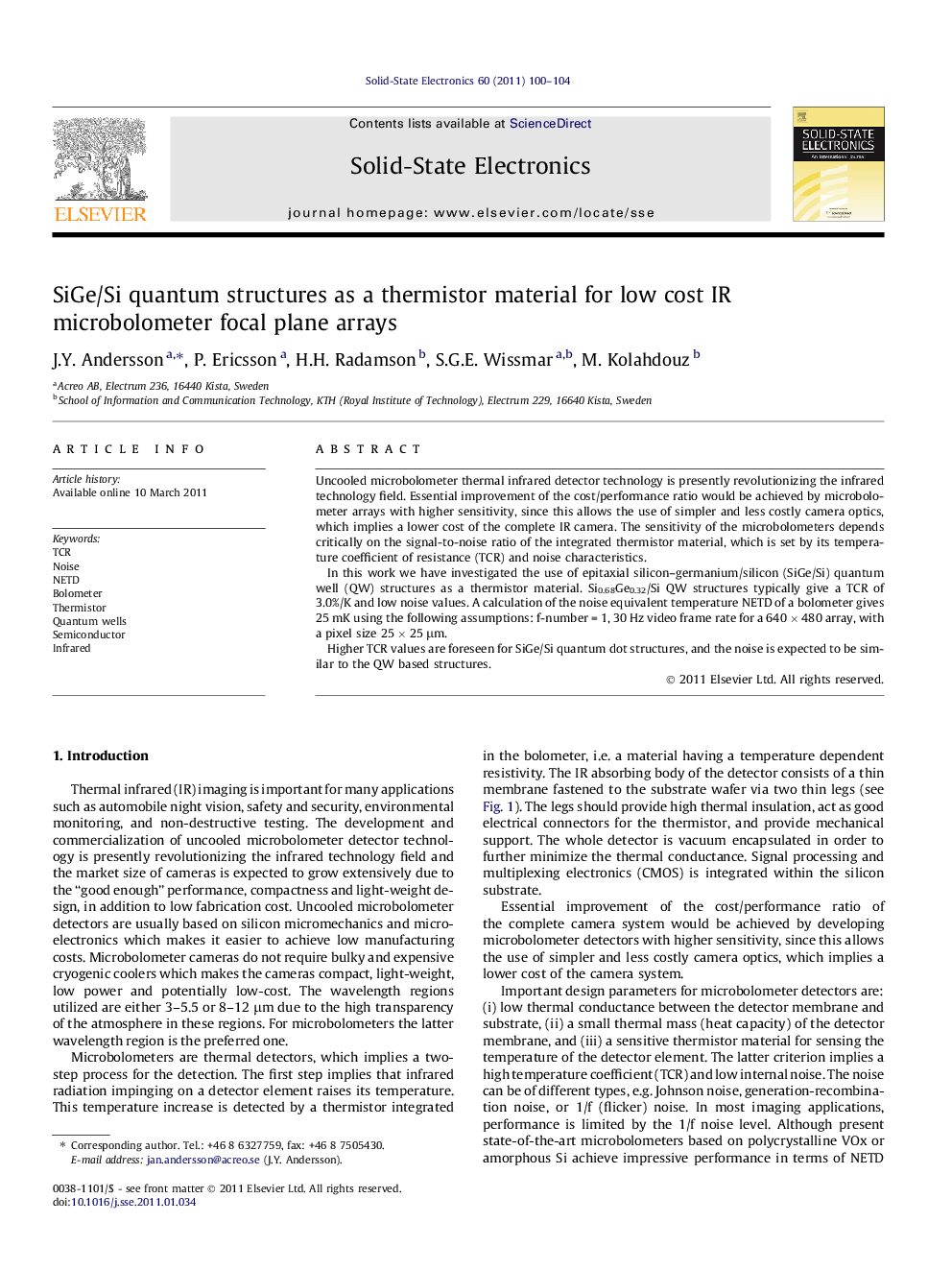| Article ID | Journal | Published Year | Pages | File Type |
|---|---|---|---|---|
| 748347 | Solid-State Electronics | 2011 | 5 Pages |
Uncooled microbolometer thermal infrared detector technology is presently revolutionizing the infrared technology field. Essential improvement of the cost/performance ratio would be achieved by microbolometer arrays with higher sensitivity, since this allows the use of simpler and less costly camera optics, which implies a lower cost of the complete IR camera. The sensitivity of the microbolometers depends critically on the signal-to-noise ratio of the integrated thermistor material, which is set by its temperature coefficient of resistance (TCR) and noise characteristics.In this work we have investigated the use of epitaxial silicon–germanium/silicon (SiGe/Si) quantum well (QW) structures as a thermistor material. Si0.68Ge0.32/Si QW structures typically give a TCR of 3.0%/K and low noise values. A calculation of the noise equivalent temperature NETD of a bolometer gives 25 mK using the following assumptions: f-number = 1, 30 Hz video frame rate for a 640 × 480 array, with a pixel size 25 × 25 μm.Higher TCR values are foreseen for SiGe/Si quantum dot structures, and the noise is expected to be similar to the QW based structures.
Research highlights► Monocrystalline SiGe/Si superlattices are suggested as a thermistors for infrared bolometers. ► Proper design of a SiGe/Si superlattices enables sensing with high signal-to-noise ratio. ► SiGe is compatible with microelectronics processing enabling manufacturing at lower cost.
